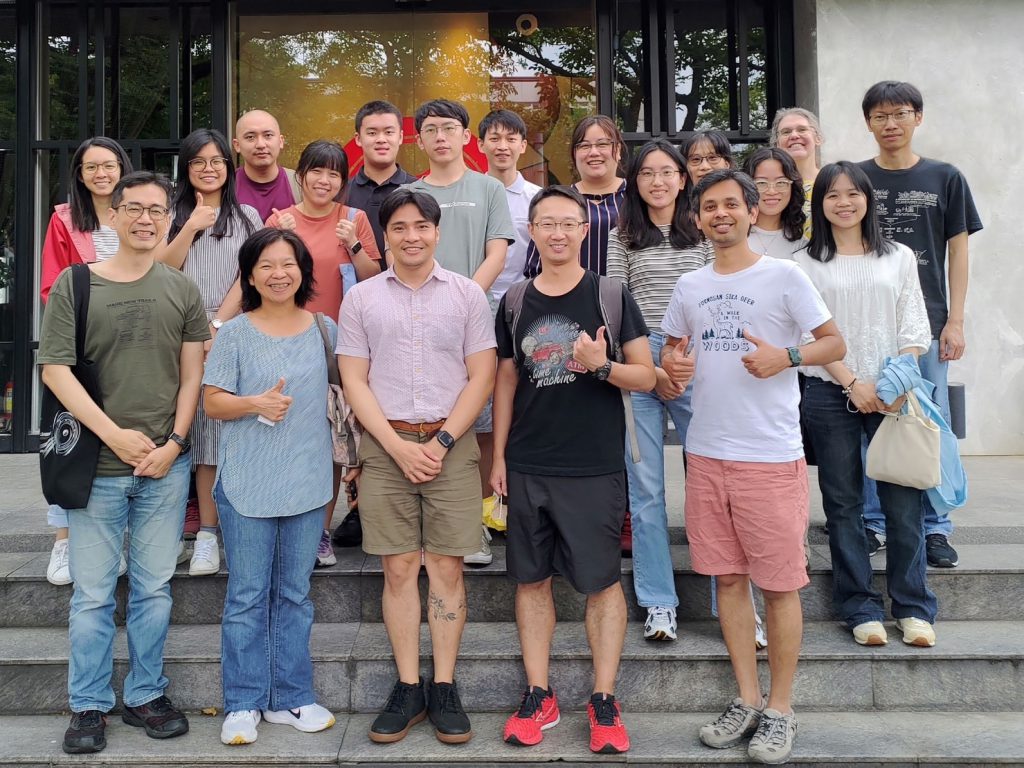For over 250 years, biologists have been puzzled about why regenerative animals regrow lost appendages at a rate proportional to the degree of appendage loss. A team led by Dr. Chen-Hui Chen at the Institute of Cellular and Organismic Biology (ICOB) and Dr. Keng-Hui Lin at the Institute of Physics (IOP), Academia Sinica discovered a ‘mechanical wave’ that governs positional sensing during wound healing and regeneration. This study was published in Nature Physics in June 2023.

▲(1)The tailfin of an adult zebrafish. Epithelial cells are labeled by red fluorescence; (2) The epithelial cells involved in the process of wound healing; (3) Zebrafish tailfin’ s epithelial cells
Highly regenerative animals can regrow lost appendages and the rate of regrowth is proportional to the amount of appendage loss. Curiosity about this century-old phenomenon prompted the team to investigate if the mechanism of wound healing, as the first stage of regeneration, determines the amputation position. In vitro studies revealed significant insights into the mechanics of the wound-healing process, including the identification of mechanical waves in post-injury epithelial cell expansion. It has been previously suggested that these mechanical waves may also be involved in positional sensing. The team performed live-cell imaging on adult zebrafish tailfins to monitor the collective migration of basal epithelial cells upon tailfin amputation. A cell density wave propagating away from the amputation edge was observed, with the maximum traveling a distance proportional to the amputation level and cell proliferation at later stages. Subsequent development of a mechanical model to explain this wave behavior, including the tension-dependent wave speed and amputation-dependent traveling distance, provided additional insights into the process. Together, the findings point to the presence of an in vivo positional sensing mechanism in regenerative tissue based on a coupling of mechanical signals manifested as a traveling density wave.
This study is supported by funding from the Institute of Cellular and Organismic Biology and the Institute of Physics, Academia Sinica, to C.-H.C. and K.-H.L.; grants from Academia Sinica to C.-H.C. (AS-CDA-109-L03) and the Academia Sinica Innovative Materials and Analytical Technology Exploration Program to K.-H.L. (AS-iMATE-109-12 and AS-iMATE-111-14); and grants from National Science and Technology Council, Taiwan, to C.-H.C. (MOST 106-2628-B-001-001-MY4 and MOST 110-2628-B-001-016), K.-H.L. (MOST 109-2122-M-001-001-MY2), and F.-L.W. (MOST 109-2112-M006-028-MY3).
Author list: Marco P. De Leon, Fu-Lai Wen, Giovanni J. Paylaga, Ying-Ting Wang, Hsiao-Yuh Roan, Chung-Han Wang, Chung-Der Hsiao, Keng-Hui Lin*, and Chen-Hui Chen*
*Corresponding authors
Article link: https://www.nature.com/articles/s41567-023-02103-6

▲An interdisciplinary team led by Dr. Chen-Hui Chen at the Institute of Cellular and Organismic Biology and Dr. Keng-Hui Lin at the Institute of Physics, Academia Sinica
